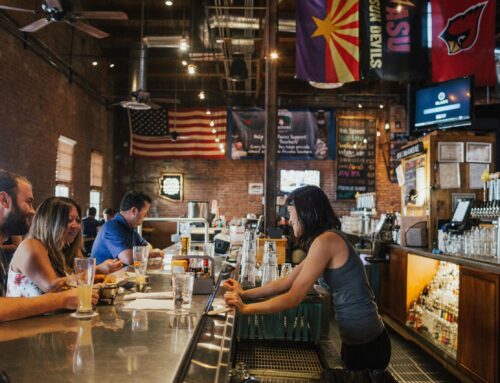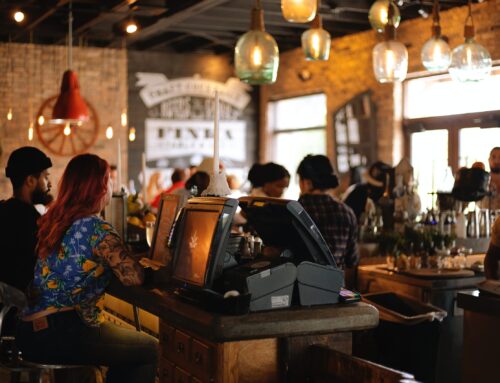Many restaurant owners get into the business because they want to create an amazing culinary experience that is completely and totally unique. Many others get into the business side of things and look for ways to expand and grow beyond their first location. Others may have intended to stick with a single restaurant, but soon see the huge opportunities of branching out.
Is this the right time to expand your operations? Will you double your customers, or just spread your current customers out across multiple locations?
There are a lot of important questions that you should ask yourself before you begin opening new restaurant locations. This guide is intended to help you answer some of the most common and critical questions to determine your readiness for this next big step.
Make Sure You Know What’s Working about Your Existing Locations
A lot of different factors can contribute to your restaurant’s success, and you have to understand these elements if you want to see a repeat of that success. Do your research on your own location before you start exploring other locations.
Sometimes, though, business owners can have a mistaken belief about what brings in the customers, so make sure you find out what your guests think about it, too. Some questions you may ask include:
- Is it the menu?
- The ambiance?
- A really friendly manager or staff?
- Is it because there isn’t much competition?
- Is it the demographics of the area in which people prefer small and unique independent restaurants or a downhome family-style restaurant?
Get the Funding
Where will you get the capital to fund your new restaurant? Is your current location(s) generating enough revenue to fund the expansion yourself, or will you seek other sources, like business loans or outside investors?
Many restaurant owners opt to treat each location individually, like a separate business venture, to protect the original restaurant from losing any profits. So, that means that the new venture needs to be able to stand on its own. It should be supported by its customers, not by another restaurant.
Lack of sufficient funding is one of the main reasons that restaurants fail, so make sure that you have the finances to cover your building, kitchen equipment, restaurant furnishings/appliances, décor, food inventory, and other critical components of the restaurant business.
Get the Best Location
Location is crucial to your new restaurant’s success.
But what does that mean, exactly?
There are some important factors you need to look at for a new location – and then compare them to the benefits of the locations where you currently do business.
Are you getting a lot of foot traffic because you’re on a busy Main Street? Are you next to a bus stop and it’s easy for people to stop in? Are you in the vicinity of an event center and people take advantage of that convenience?
If these are the things that made you successful in your original location, can you duplicate them in your next one? If not, will you be able to replace them with an even better opportunity?
It’s also important to consider the proximity to your other location. You don’t want to compete with yourself for a certain customer base. At the same time, you might not have as much brand recognition if you set up too far away. (And it could be harder for you to effectively put in enough time at both locations.)
Do enough research into the area so you have a good grasp on the business situation there. Look at the competition and see how well they’re doing and look for locations where your restaurant could fulfill an unserved niche.
Re-Establish Your Business Plan
Most independent restaurant owners initially only plan for a single location, but there are those who plan for the franchise from the very beginning.
If you are like the former, you are going to have to create a new business plan, either specifically for the new location (especially if this new restaurant is completely different from the original location) or to re-establish yourself as a business that owns several restaurants instead of just one.
If you are expanding the same restaurant into a new location, you’ll be able to duplicate a lot of the information and structure of the original plan. If, however, you decide that your burger joint has done great, but now you want to open a ramen restaurant and simply run two different restaurants, you’re going to have to come at it fresh.
Get the Best Staff
Your new location needs to provide the same great service your customers expect from your brand. This means that you need to have a great manager, amazing cooks, and dedicated wait staff in place before you open.
This might mean bringing them into your original restaurant for training, or it could mean spending extra time at the new location to ensure everything lives up to your expectations.
Get the Best Stuff
You’ve been running a restaurant successfully for some time now, so you should have a good idea about the best appliances, tables, chairs, vendors, management software, food suppliers, utensils, and even restaurant insurance – everything that contributes to the quality of your establishment.
Now, though, you’ll need to make sure that it all fits in the new location without causing any extra problems. The kitchen should be just as effective as before and the seating should provide the same comfort without crowding everyone in too much.
Speaking of Insurance
It’s likely that your original restaurant coverage was based on having a single location. That will have to change as you open up others.
Even if your original plan was to have multiple locations, your coverage provider needs to have the exact details of the location, the area around your restaurant, the building’s history, your history as an owner, and more information before creating a policy that will be appropriate to the new location.
Expanding your business into multiple locations is a big step, but it can be extremely rewarding and profitable if you are fully prepared.




